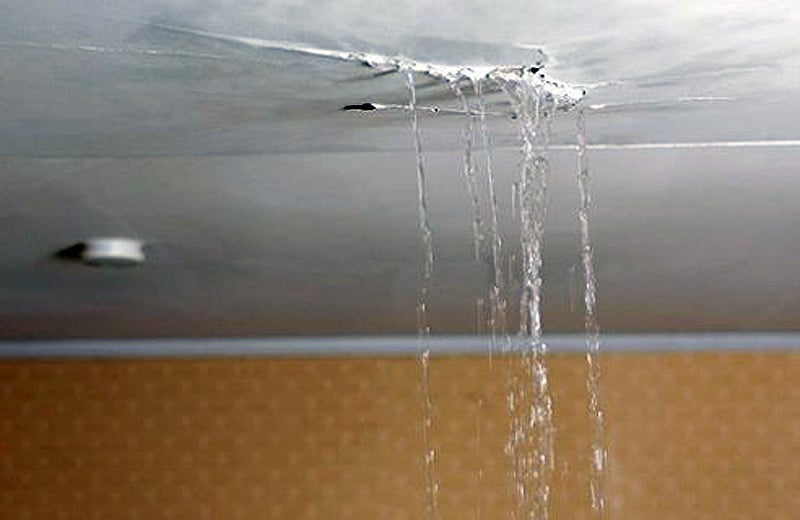Exploring the Top Six Causes of Water Leaks in Residential Spaces
Exploring the Top Six Causes of Water Leaks in Residential Spaces
Blog Article
How do you really feel in relation to How to Find Water Leaks?

Leakages not just cause waste of water but can also create unneeded damages to your residence and advertise unwanted organic development. Regrettably, water leakages may go unnoticed because most of the pipework in our house is concealed. By looking and recognizing for daily situations that create leakages, you can shield your house from future leaks and also unneeded damage. Today, we will certainly consider 6 leakage causes that may be causing your pipes to trickle.
Instant temperature adjustments.
Severe temperature adjustments in our pipes can create them to broaden and contract all of a sudden. This expansion as well as contraction may create fractures in the pipelines, especially if the temperature are below cold.
Rusty water systems
As time goes by, your plumbing system ages and rust such as rust might start eating away the pipes. This could be the cause of discoloration or bending on your water pipes. This asks for an examination with your plumber quickly. Take into consideration replacing the pipelines considering that they are at a greater threat of corrosion than the newer versions if our plumbing system is old.
Malfunctioning Pipeline Joints
The point at which your pipes link is often the weakest link in the waterline. Pipe joints can deteriorate over time, leading to water leaks. Unfortunately, the majority of pipeline joints are not quickly noticeable. If you have noisy pipes that make ticking or banging noises, especially when the hot water is switched on, your pipeline joints are possibly under a lot of pressure. It is recommended to have your plumber inspect your system annually.
Intruding roots
Most water leaks start outside your home rather than inside it. If you notice an abrupt reduction in water pressure, say in your tap, take time to go out and also analyze your lawn. You might see damp spots or sinkholes in your lawn, and that could indicate that tree roots are invading water lines creating water to leak out. You can have your plumber look for invasion, especially if you have trees or bushes near your building.
Poor Water Connectors
At times, a leak can be triggered by loose pipes and also pipes that provide your home appliances. In instance of a water connections leakage, you may observe water running directly from the supply line or puddles around your devices.
Blocked Drains
Obstructed drains could be bothersome and also inconveniencing, however they can occasionally end up creating an overflow resulting in break pipes. Keep getting rid of any materials that might go down your drains that can clog them to prevent such aggravations.
All the above are reasons for leaks yet not all water leakages arise from plumbing leaks; some leakages could come from roofing leakages. All leaks need to be repaired right away to stay clear of water damage.
Leaks not just create waste of water however can also trigger unneeded damages to your residence and promote unwanted organic development. By understanding as well as looking for day-to-day situations that cause leaks, you can secure your residence from future leakages and also unneeded damages. Today, we will certainly look at 6 leak triggers that may be triggering your pipes to drip.
At times, a leak can be caused by loosened tubes and also pipelines that provide your devices. In instance of a water links leakage, you might discover water running directly from the supply line or puddles around your appliances.
How To Check For Water Leak In Your Home
How To Check for Leaks
The average household's leaks can account for nearly 10,000 gallons of water wasted every year and ten percent of homes have leaks that waste 90 gallons or more per day. Common types of leaks found in the home are worn toilet flappers, dripping faucets, and other leaking valves. These types of leaks are often easy to fix, requiring only a few tools and hardware that can pay for themselves in water savings. Fixing easily corrected household water leaks can save homeowners about 10 percent on their water bills.
To check for leaks in your home, you first need to determine whether you're wasting water and then identify the source of the leak. Here are some tips for finding leaks:
Take a look at your water usage during a colder month, such as January or February. If a family of four exceeds 12,000 gallons per month, there are serious leaks.
Check your water meter before and after a two-hour period when no water is being used. If the meter changes at all, you probably have a leak.
Identify toilet leaks by placing a drop of food coloring in the toilet tank. If any color shows up in the bowl after 10 minutes, you have a leak. (Be sure to flush immediately after the experiment to avoid staining the tank.)
Examine faucet gaskets and pipe fittings for any water on the outside of the pipe to check for surface leaks.
Undetected water leaks can happen without the home or business owner even realizing. If you suspect a water leak, but not able to find the source. It is time to contact a professional water leak detection service, The Leak Doctor.
How To Find a Water Leak In Your Home
https://www.leakdoctor.com/blog/How-To-Check-For-Water-Leak-In-Your-Home_AE197.html
We are very fascinated with How to Find Water Leaks and I hope you appreciated the entire blog entry. Loved our article? Please share it. Help another person find it. We truly appreciate reading our article about Top Causes of Home Water Leaks.
Call Today Report this page